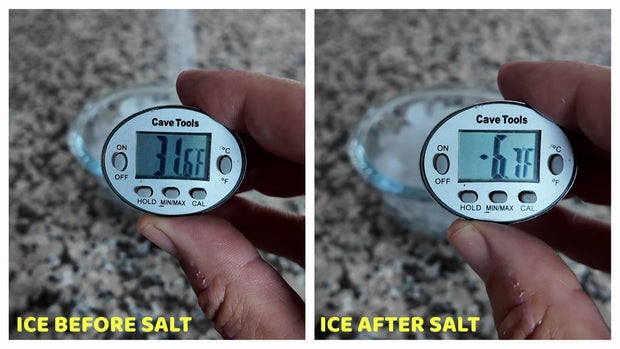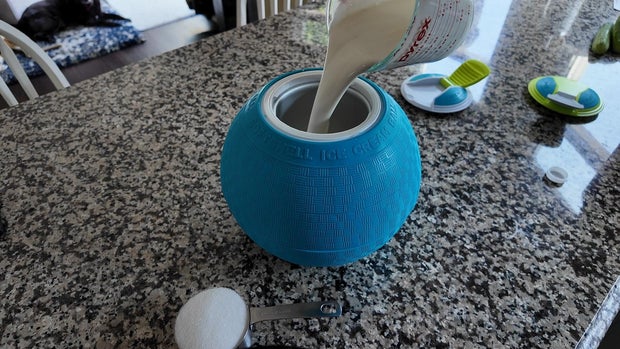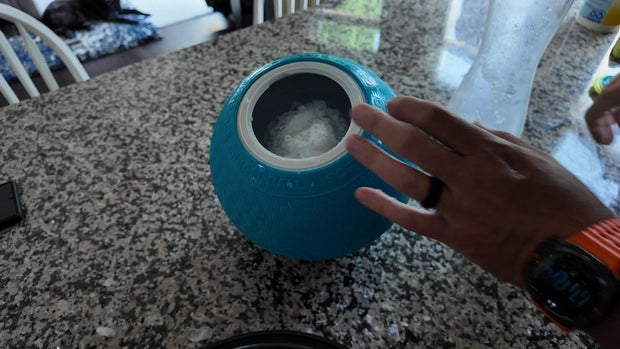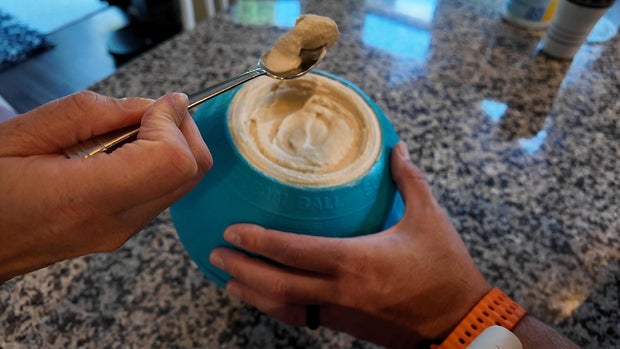Salt's "chilling" effect | Hey Ray
Salt!
It is sugar's savory cousin and is mostly thought of as an ingredient in food. It is much more than that, though.
Salt is essential to your body's functions. It melts snow and ice in the winter, and you can use it to help cream freeze to make a delicacy sent from the heavens...ice cream! At least that's the way we are going to make ice cream today.
You might be thinking to yourself, "salt melts liquids, so why would you need that for ice cream?"
Adding salt to water technically does not melt it. It just lowers the freezing temperature of water, which does melt it until you hit that lower temperature. While it lowers the freezing temperature, it actually gets colder too!
You heard that right. Adding salt to water makes the water colder, as you can see!
That probably seems backwards.
Dissolving salt in water requires energy, so that energy is absorbed from the water, causing the temperature to drop. The same goes for salt on ice!
The salt dissolves on the ice, dropping the freezing temperature of the ice, but making it colder at the same time. Purdue University says this is an endothermic reaction, or a chemical reaction that occurs with the absorption of heat.
We are going to use this knowledge to make our version of one of science's greatest achievements...ice cream!
My ice cream maker is a little different. On one side of this ball, you put your ingredients in a compartment. The other side of the ball gets filled up with ice and rock salt, kosher salt, or ice cream salt.
That is where our reaction will happen, causing the temperature to drop.
To turn this into ice cream, we have to shake and roll, and play with this ball for 25 minutes!
The action makes sure the salt is dissolving on the ice, lowering the temperature. It also churns the cream, making sure that large ice crystals don't form. This also allows air inside the freezing cream, helping it to be creamy, rather than rock-hard.
It is a lot of work, but the science and ice cream are worth it. Using salt and ice's endothermic reaction was how they made ice cream in the olden days.
This ball is just a new take on the classic way to make ice cream.














